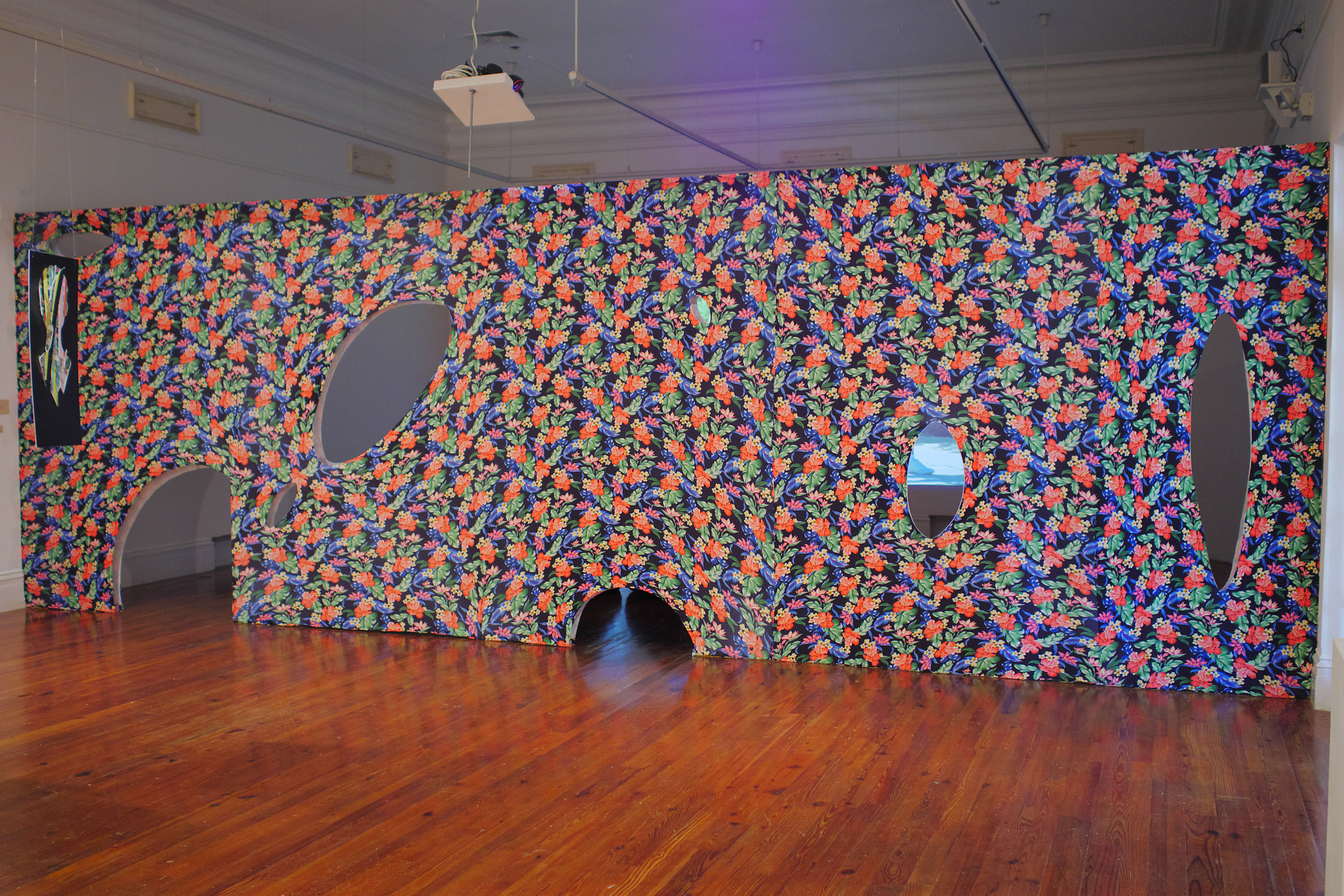
by Holly Bynoe
The National Art Gallery of The Bahamas is putting itself in a unique position to focus on expanding beyond the “National,” cultivating an ethos that impacts upon its local space with a mission that can be felt beyond The Bahamas through its dynamic programming which remains critical of its position and history.
Given the unique geographic location of The Bahamas–lying outside of the Caribbean Sea, in the Atlantic Ocean–and its social and political placement within the Post-Independence era regionally, it comes then as no surprise that 14 years into its development the NAGB continues to build into its regular programming and exhibitions, works from artists working in the Global Caribbean and the African diaspora.
Double Dutch, a concept that was brought to fruition and realisation during my tenure at the institution, has over the last three years, seen six shows which included the works of Blue Curry (The Bahamas), James Cooper (Bermuda), Charles Campbell (Jamaica), John Cox (The Bahamas), Kendra Frorup (The Bahamas), Gabriel Ramos (Puerto Rico/US), Deborah Anzinger (Jamaica), Heino Schmid (The Bahamas), Leasho Johnson (Jamaica), Edrin Symonette (The Bahamas) and in our most recent collaboration, Joiri Minaya (Dominican-American) and Dede Brown (The Bahamas).
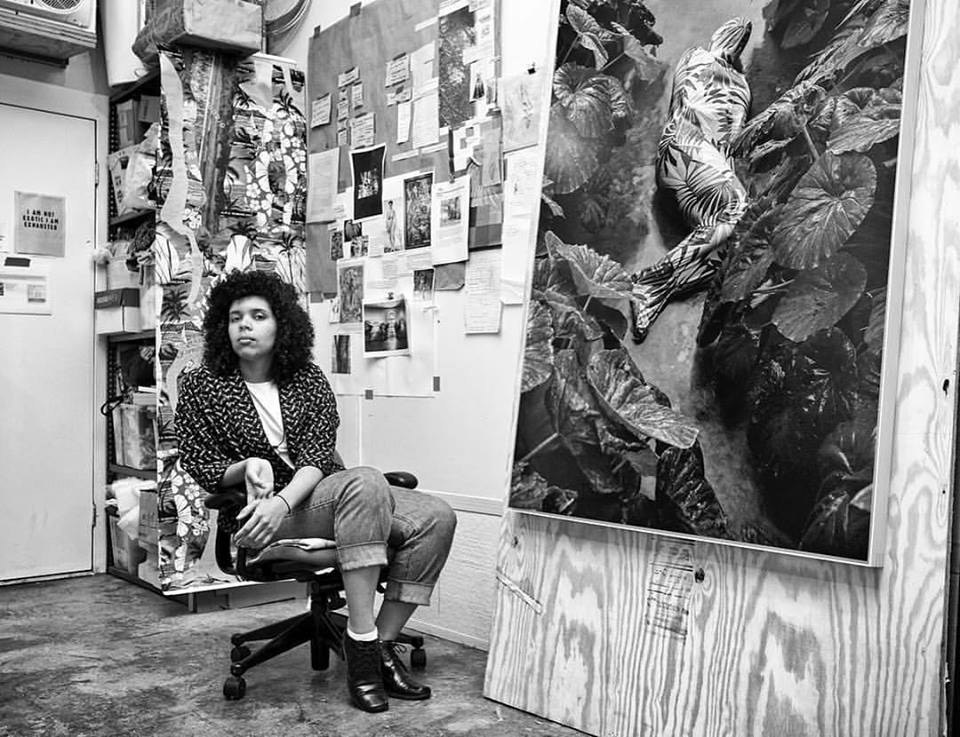
Portrait of Joiri Minaya. Image courtesy of Maxim Ryazansky.
The Double Dutch supports the concept that bringing local, regional and diasporic-based artists together to work with a group of ideas personal, political and otherwise, is crucial to the development of a contemporary Bahamian identity. These artists are often divided linguistically and geographically but are united by common historical, economic or practice-based conditions. For this reason, the project attempts to create and maintain ties throughout the Caribbean and the wider diaspora, with the Gallery as pilot and conduit.
As a non-Bahamian and Caribbeanist working in a double way, within the local space and the wider Caribbean, it is a lovely gesture to see my national institution think and act beyond the national. In many ways, it is the only way to combat the insularity we feel as cultural practitioners and the tension and insecurity in our Caribbean identities. With each incarnation of Double Dutch, we learn from the last, the things that worked and the things that we need to keep on pounding away at formally, creatively and practically, analysing the way that our space changes with the birth of new ideas, representations and traumas.
The sixth iteration of Double Dutch “Re: Encounter,” featuring the works of Brown and Minaya, starts to address how important it is from a curatorial perspective to provide opportunities for artists, who are looking for ways to mitigate the sense of frustration that they feel within their practice, by allowing a moment to experiment. Institutions, in turn, should respond and dialogue with the more troubling aspects of our lived realities, whether that might be from an emotional, social, philosophical or political perspective.
The following is the first in a two-part series of long-form Q+As that seeks to expand upon both projects. We connect with Joiri Minaya, a Dominican-American multi-disciplinary artist whose work deals with identity, otherness, self-consciousness and displacement. Most recently Minaya’s work was included in part of the ongoing Pacific Standard Time Project at MOLAA, the Museum of Latin American Art, in the exhibition “Relational Undercurrents” curated by Tatiana Flores also featuring the works of four Bahamian artists: Janine Antoni, Blue Curry, Kishan Munroe and Lynn Parotti.

Holly Bynoe: You often work with tropes and the way the West has invested in the perpetuated stereotype of the Caribbean and Latin America, advertising it as a idyllic tourist haven. Many of your actions reverse these associations, as they attempt to shift attention away from this stereotype. Why is this important to you?
Joiri Minaya: This perpetuated stereotype is an omnipresent, inescapable giant to me. Even living in the supposedly cosmopolitan, globalized city of New York, I’m constantly reminded of it. So many of my interactions with people revolve around dispelling stereotypes while explaining basic aspects of my identity and my humanity.
I think something interesting happens when the reversal at play in my work evidences the performativity of it all, when the system of demand and offer is highlighted. It makes the “other” no longer an other, no longer just the receiver of the gaze, no longer naïve or unaware, no longer existing to be merely contemplated or evaluated. The “other” is now humanized and aware of themselves, understands they’re being looked at, and communicate they’re not just existing in the way they’re being imagined: they’re milking the projection, performing what they are imagined as, and they’re looking at you while they perform, and (conceptually) smile, making the observer also feel self-aware, and awkward that they were projecting those ideas onto others to begin with. I really like this.
Beyond experiencing this gaze-system on a personal level, it’s also present in the world I navigate as an artist. There is the disjunctive of whether one as a Latin American or Caribbean artist will cater to the existing expectations of the labels, or go against them (which is also in relation to them). If one pretends to ignore the matter of identity entirely and position one self as “just another artist,” as an abstract artist, as a conceptual artist, one’s work will still be place in relation to the preconceived identity boxes the dominant system has for you in the form of market, exhibitions, discourse, context.
This is why I’m having a lot of fun with the work I’m doing at the moment, it embraces the structure making it aware of itself, and question itself.
I would like to eventually find a context where the work can escape the structure and its labels, but in the meantime the journey has been fruitful and stimulating.
This body of work is also about refusing “authenticity.” I’ve felt that sincere explorations of culture and identity are often flattened and oversimplified for their easy and quick consumption and distribution in this biased, superficial art world. Authenticity and originality have become commodities. In this sense, I find the art world I navigate shares a lot with the context of tourism, and the history of colonialism, so it’s interesting to make work from the confluence of those areas.

HB: In your most recent works you create immersive and surreal atmospheres where social relations are explored. Whether it be the mythologizing the feminine or being critical about the colonization or the way in which our spaces have been co-opted and changed by a very virulent and powerful tourism market, and the ways that conditioning has forced us into certain entrapments. In the video piece Labadee, there are the words from Columbus’ diary and then this stark and very sad rendition of La Bamba followed by an abrupt wall. The wall extends and is topped by wire, something that we can all call familiar here within this Bahamian landscape. Beyond the wall young Haitian boys parade, solicit, perform and some go on with their daily lives. There are several levels of penetrations within the actual artist gaze – the deeper you go the deeper you go. For the installation here you have constructed a wall. It is hard to not think about the political situation in the US when we hear about the construction of walls. Tell us about the wall, it’s portals and points of entry. How do you anticipate usership and viewing?
JM: I was thinking about the fence in the video, the wall in the US-MX political landscape, and the subject of immigration, access and privatization in general when making this spandex fabric wall. When you enter the space you have this long wall dividing one side of the gallery from the other with pierced holes. You can see through the holes that there’s a video and bean bags on the other side, and while one or two of the holes looks proportional enough to an average body to be inviting, most holes are smaller or have more difficult locations to engage with, like all the way on the lower edge of the wall above the floor, or quite above the crotch so that the spandex needs to be pulled down for people to feel they can reach the floor on the other side.
In the video, there’s a blue wall and behind it a metal fence dividing the privately managed part of Labadee from what seems to be the outskirts of the town outside.
Although I grew up in the Dominican Republic, yet another Caribbean country that depends strongly on tourism, I hadn’t seen such a stark division and controlled access (the beach is only accessed through a boat and it’s services are only activated when a cruise comes). There’s definitely levels of access and control in private spaces in the DR, but nothing so wild as needing a cruise to access a space! There’s also the massiveness of it all. Luxury is often tied to a limited number, but this is a beach that becomes desolate, then overwhelmingly crowded by the thousands all at once, then desolate again. It’s like Disney. The experience left a very visceral impression on me. Then yet another layer is my presence as a Dominican body in this Haitian land though these means, considering the current sad Dominican-Haitian political relations.
So in conversation with the wall in the video, I wanted to create an experience where there was an obstruction of the physical space, yet porosity, something that would create tension in how one moved through the space yet ultimately let one through.

The fabric used for the wall has a colorful pattern of tropical flowers in a style that, although modernly produced, looks like 1950’s tropical barkcloth, which is a style that dominated interior decoration in the US at the time, referencing colonial botanical illustrations. So a reading of the piece is that it encourages the audience to pierce back and forth through this cliché tropical narrative with their bodies. At the same time, there’s this commentary on the freedom and privilege the audience has, to move from one side to the other, in contrast to the lack of this mobility and access personified by the youth soliciting on the other side of the wall. Maybe this points at a possible complicity with the system, while also creating an opportunity to penetrate or transgress. There is conceptual and physical tension.
I like how the NAGB staff started calling the holes “portals” because it makes me think of afro-futurism, which is not a discourse I’m intentionally trying to frame my work in but I’m surely inspired by it and I think it aligns with this work in the way it’s about using science fiction to pierce through restrictive narratives. There aren’t many fictional elements in this work but I enjoy that it awakened fictional associations.
HB: We have a contentious and ambiguous relationship towards colonial statutes and historical figures in public spaces, what they mean in terms of legacy and the perpetuation of a thinking around colonialism and in fact our post colonialism. It is interesting that when we were working on the development of the show you wanted to wrap the statue of Christopher Columbus at Government House in hyper tropicalized fabric, following your ongoing work with the bodysuits.
The NAGB reached out to the Antiquities Monuments & Museum Corporation (AMMC) for permission for this intervention and wrapping to happen but we didn’t get it given time constraints. The answer wasn’t a no, the response was rather, we haven’t had this conversation locally yet between institutions and with our public. I think that this was a provocative answer and not the one I anticipated but one with a lot of possibility…?
When you look at the current surge of marches happening across the world and in particular in Charlottesville, US, and most recently during this year’s Columbus Day celebrations in Trinidad and Tobago where they defaced the statue in Columbus Square, Port of Spain, I can’t help but think that this ambiguity towards our “discovery” and the reality of ‘genocide,” rape and pillage might in fact be the way that most of us feel towards our history and these figures as icons of power/destruction in our landscape. Do you want to speak to this?
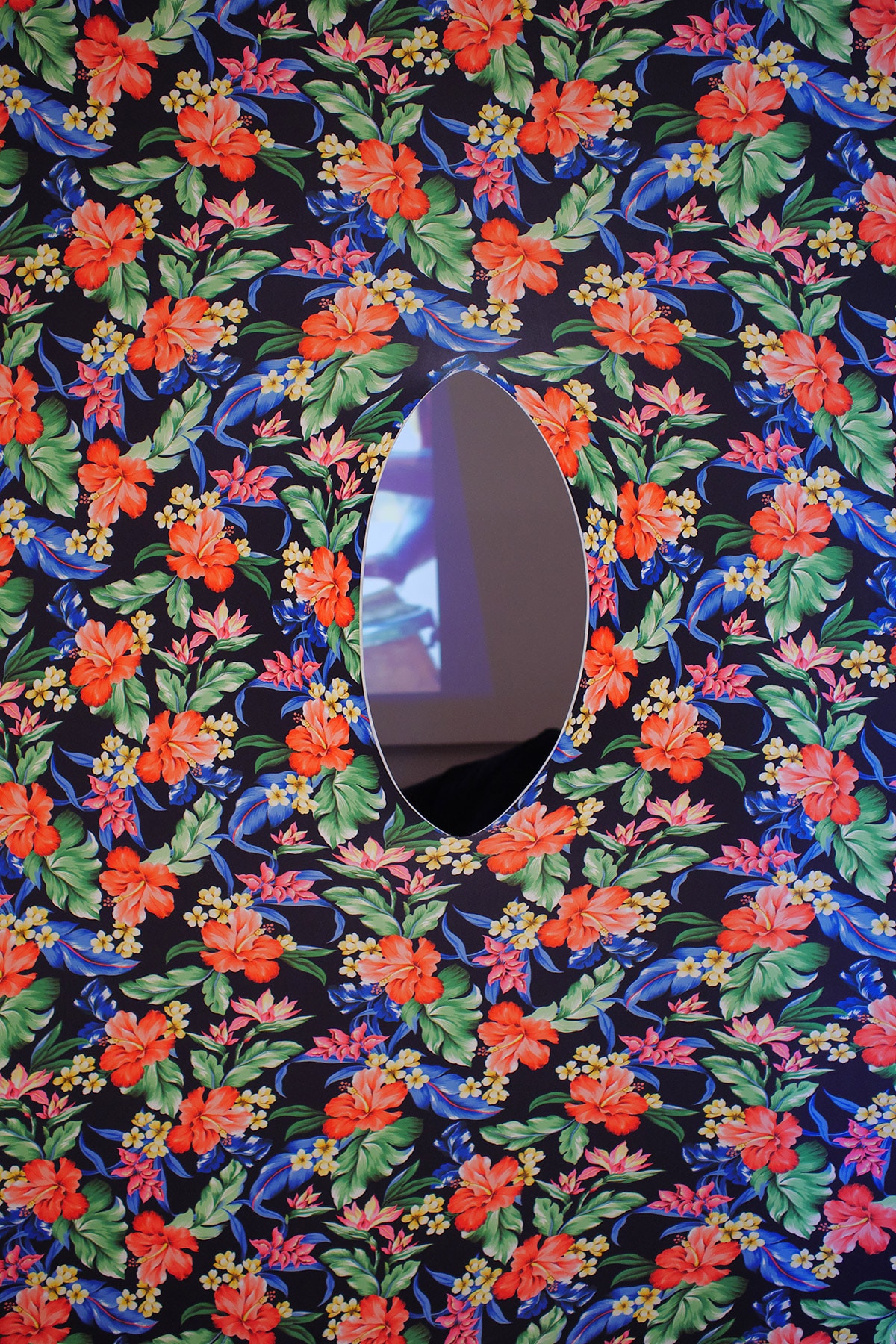
JM: October 12th is a date I grew up very aware of because in the DR schools we celebrate this day as the Día de la Raza (the Day of the Races?) which is the way our nation has found to rebrand the day as a “celebration of the encounter between the races.” Of course, this framing totally ignores the fact that two of the three races in the encounter don’t have much to celebrate since they actually suffered immensely / were obliterated in the process, (like in the case of the Tainos in the DR). As I grew up and learned the historic details and became more knowledgeable of decolonial discourse, this date became more and more interesting to me for artistic reasons. Months before this show, in a studio visit with Nomaduma Masilela, she was looking at my bodysuit series of photos and performances, and asked me if I had ever thought of using them on patriarchal, phallic monuments, and the discourse that could bring to my work after having used them on the female body for a while. My first thought was the Christopher Columbus statue in Santo Domingo, in front of the first cathedral in the Americas, which is a statue I saw almost daily for six years since it’s a block from the National School of Visual Arts I attended.
When this exhibition was first planned, I wasn’t really thinking of this idea since I was interested in coming without an agenda to the dialogue the collaboration would inspire for the show. Eventually when the conversation developed into this insider-outsider relation and we pushed back the date a few months and it ended up being planned for the week of October 12th, it made sense to incorporate this idea and to have this conversation in the present day nation that Columbus first arrived to in this region.
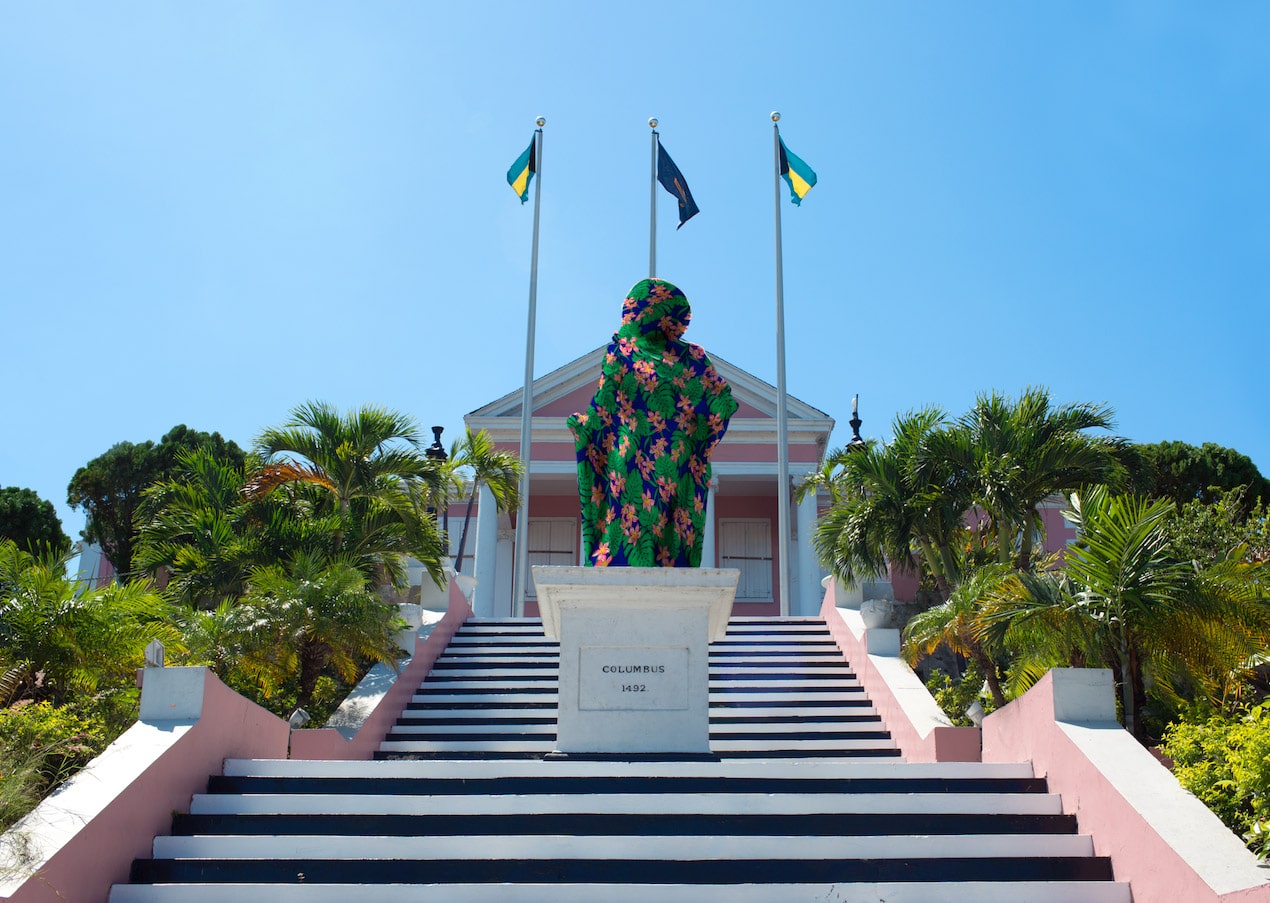
And, so, New Providence also had a Columbus statue, and we proposed the idea to the institution that guards statues, and they didn’t give us permission, but the alternative of printing the image on postcards where people were invited to write their thoughts on the back of them to me was an equally successful gesture in that it started this conversation and it’s at the same time a documented archive. (I still hope they let me wrap it in a future October 12th though! Or that they start a program where they accept artists proposals for temporary and permanent interventions of these monuments in order to recontextualize them, if they aren’t going to bring them down).
When I was in The Bahamas I saw a friend post an image on social media of the Charlottesville confederate statue wrapped in what looked like a giant black plastic trash bag. I would like my wrapping to be a colorful pattern often used in tourist spaces, representing the global North’s regurgitated, projected ideas of what the Caribbean is. It’s something in between a kitsch body bag and a trash bag.
Recontextualizing colonial monuments in order to question them is a powerful gesture, especially in the Caribbean. We supposedly became independent nations but for the most part we’re still a North American and European playground where these specific foreigners in many ways have more privileges than our national population. Are we really so far from the colonial times these monuments celebrate?
HB: Tell us about these lush patterns and fabrics that you work with? Why do you continue to work with them? Why are they so attractive?
JM: I mentioned earlier how these modern fabrics that look like tropical barkcloth and use colonial botanical illustrations reference a time between the 40’s and 60’s where these designs were popular in interior decoration in the U.S.m United Statesians wanted to have something lush and fresh that would bring up fantasies of exciting, exotic far away adventures in the comfort of their civilized domestic space. Paradoxically, it is also at this time that the United States was all over the Caribbean and Latin America in the form of military invasions and political and economic domination, that continue this day in one form or another.
Then there’s the illustrations used in this style of decoration. Botanical illustrations of tropical plants were mostly made by European explorers in the 18th and 19th century, through expeditions mostly financed by governments, universities and private investors with an agenda of assessing the resources of the colonies. The same scrutiny and violence of isolating parts of a plant from it’s environment into the frame of a white sheet of paper for their scientific study is applied to brown humans, who were photographed naked, frontally, from the side, against a clear background, for their ethnographic, anthropologic “studies.”
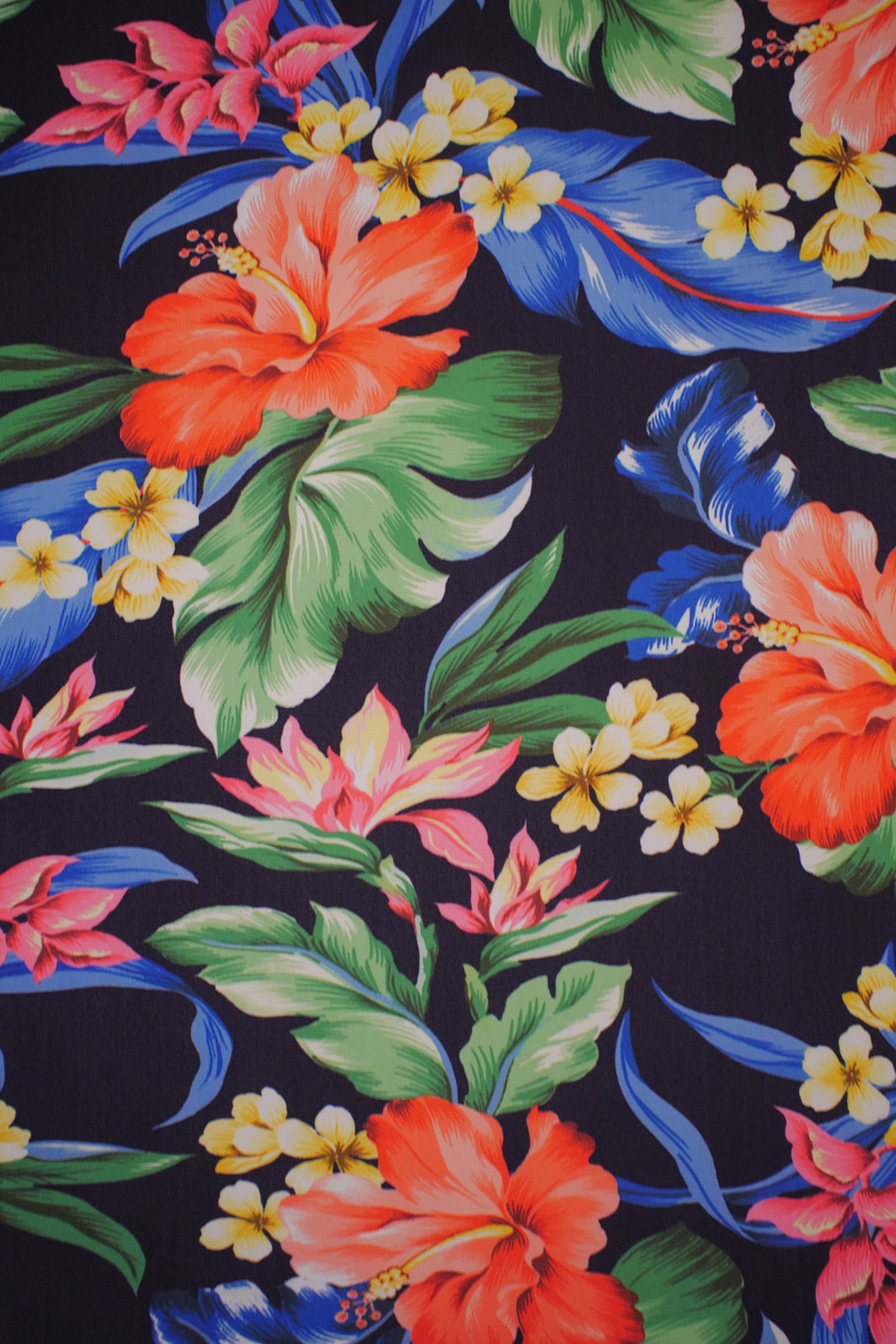
It’s interesting to see the central place Hawaii has in how this tropical barkcloth style became popular (also during times of United Statesians invasion and control), and how this visual culture became the model for every other tropical space on Earth, becoming the quintessential aesthetic of tropical international.
Nowadays, every major fashion company will bring out a new collection of tropical prints every summer, made of regurgitations of this style, that will be worn by Global North bodies to awaken the same old fantasies of freshness, excitement, chill and relaxation.
I think these patterns carry that history, now watered down, commoditized and capitalized in the superficial space of decorative arts. So it’s really exciting for me to re-contextualise them in a way that brings criticality to their existence and instrumentalising them for a larger decolonial agenda.
HB: How does the notion of “Invasion” affect your practice? I see it in the conceptual building of the work, in the way you treat and choose materials; fabric etc, and the presentation.
JM: I hadn’t consciously thought about “invasion” as a concept in my practice, but that word brings up so many associations I’m interested in! There’s the U.S. military invasions in the American continent I mentioned before, and the recent and current invasions in the Middle East. Xenophobia, both in the U.S. in relation to “foreign,” immigrant bodies, and in the DR specifically with Haitian bodies, is framed as a fear of being “invaded.” Most of the terminology around immigration has this connotation (alien, native, resident, foreigner). In botany there’s “invasive species.” In my older work, there’s these ideas about transgressing gender and the social constructions around the body, and you could read some of my performative gestures as some form of invasion on the body. I’m into subversive visual strategies, camouflage, dismantling from within, penetrating narratives, hacking…I suppose all of these can be seen as relating to invasion in away.
HB: Was this the first time that you both worked on a one-on-one collaboration? What did you get out of working together being from the same region but different spaces and different backgrounds?
JM: This was the first time for me, yes. I’m not big on collaborations, I’m into social bonding through the arts as a part of a collective but not a one-on-one collaboration. It was very interesting to work with Dede and try to make a balance between being receptive and open, but also bringing my ideas to the table.
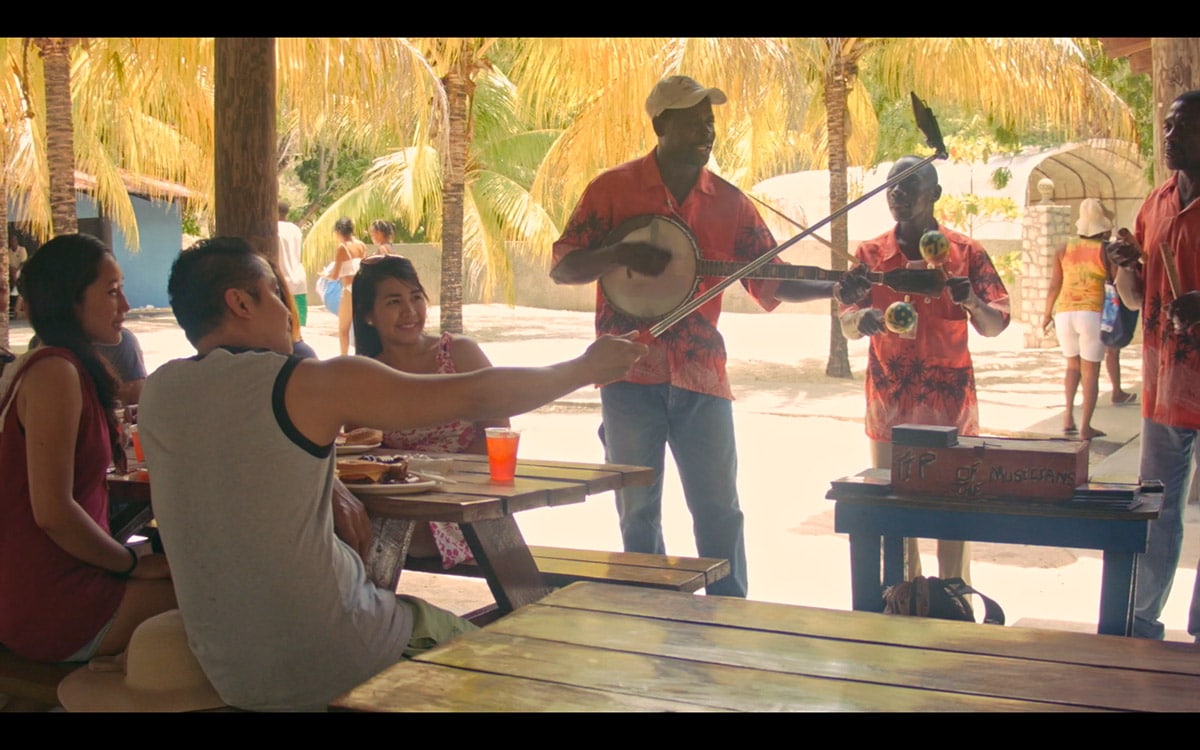
I think for me the wall is the most conspicuous place where I was influenced by our dialogues. Earlier in the process I was showing Dede my recent work with the bodysuit series called “Containers,” and she noted they offered a vicarious experience in the sense that the audience’s relation to them occurs by imagining themselves in these suits, but not really experiencing the materials since it’s only a photo. This observation, together with the challenge of how to organize our work in the gallery space, and how to plan around a space I had never visited, inspire me to expand the fabric across the room and offer some kind of experience where people would be contained in this fabric for a moment, which later developed more as “piercing through.”
It was also interesting how we both brought our relationship to pattern design to the table. I have already explained my interest in the patterns I work with, and Dede’s family owns a local company that produces patterns that are in conversation with the history I explained, yet also go in other directions as they are trying to define a decidedly Bahamian aesthetic. Dede used some of these patterns in her work for the show, which she has a personal relation with, which brings an interesting dialogue with the way I relate to the ones I use. I think the insider/outsider dynamics we established from our conversations as the subject of our collaboration really seeps through all aspects of the exhibition.
HB: You are both working with ideas of gender and in particular feminism. As two women working in this capacity, do you feel as though you have enough room to speak your truth and to be curious? If so, what is the most difficult thing about this ‘room for truth’?
JM: I do feel I have room to speak my truth and be curious (luckily so many women before me paved the way!), but I also feel I have to be aware of how the system will place me in relation to other things, and utilizing this anticipation as an active element in the work. Sometimes it’s fun, sometimes frustrating. I think the most difficult thing about having “room for truth” lies not in the message or the messenger but in being on the receiving end and it’s capacity to be effectively interpreted. One isn’t often in control of the work’s interpretation, but by trying to be aware of the context and audience, and utilizing this as an active element in the work, one can at least feel like you’re doing the most in your control to put things in the right direction. Of course people whose works align with more dominant discourses or whose subjectivities are seen as neutral and universal by default don’t have to think of these things as much.
HB: Do you always make room in your practice to play?
JM: I think “Invitation to Transgress” (the wall) is physically my most playful work so far. “Redecode: a tropical theme is a great way to create a fresh, peaceful, relaxing atmosphere” (2015) was also playful and inviting, be it merely visually or when people engaged with it to reveal the content in the QR codes, but it didn’t have the bodily experience this recent wall has. I think play is an interesting strategy to engage with an audience. Like comedy, it can have very serious, dark and even painful content disguised in a casual package of humor, superficiality and innocuousness. It can also just be fun. In a way it gives the audience a choice of how deep they want to go to uncover different layers.